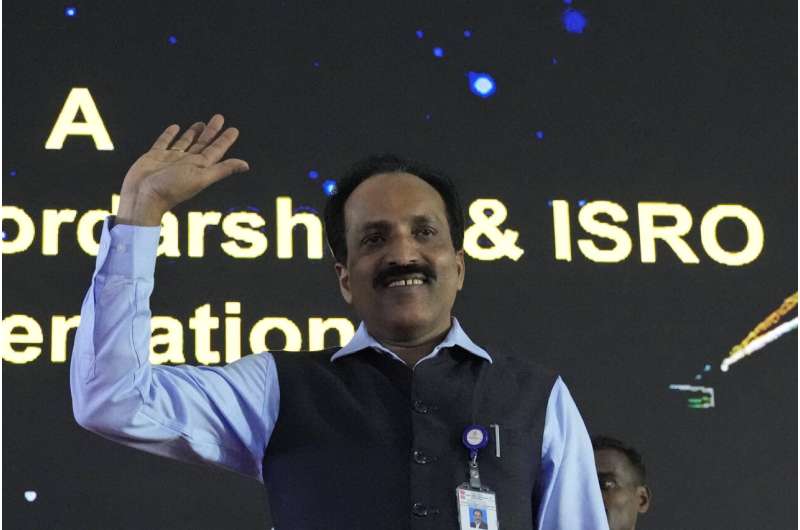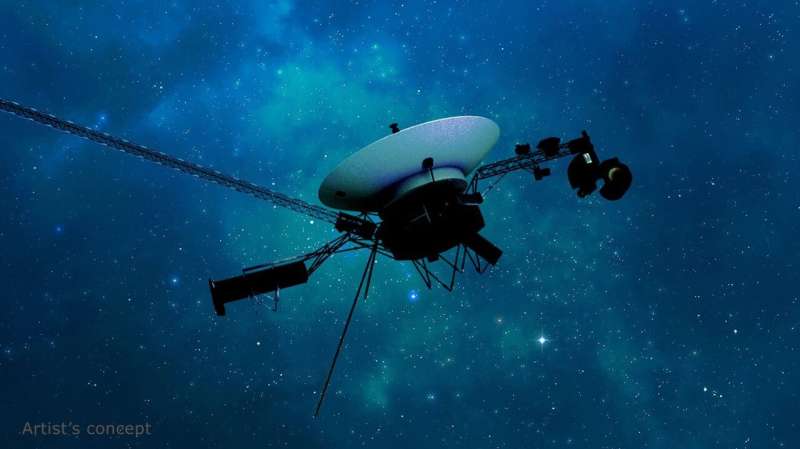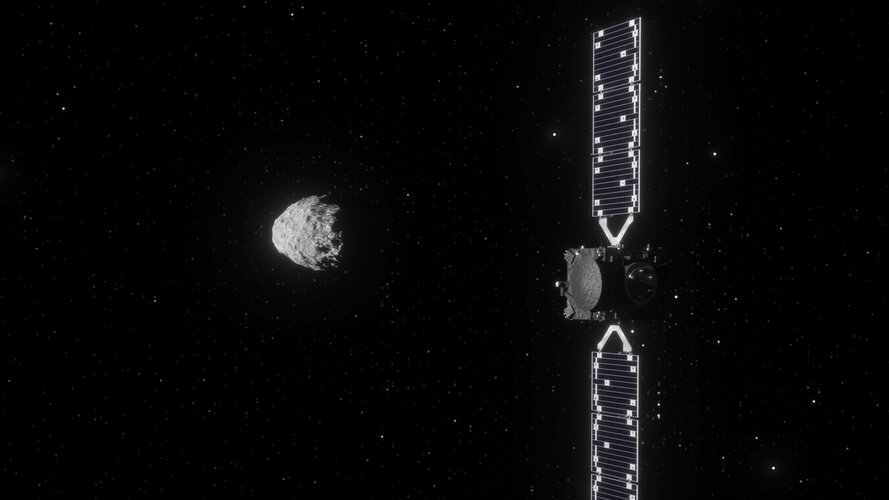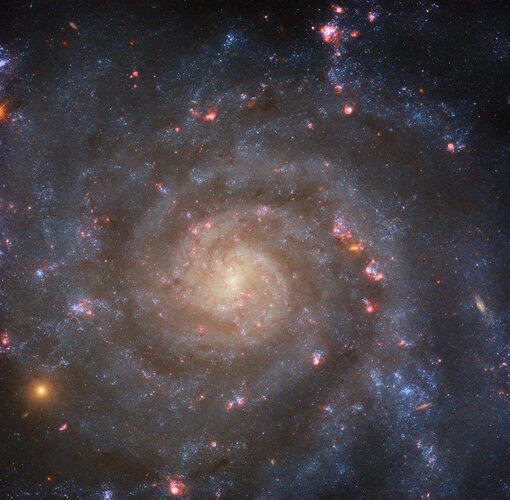
Copernical Team
India launches key test for manned orbital mission
 India on Saturday successfully launched the first unmanned trial run of its upcoming crewed orbital mission, in the latest milestone for its spacefaring ambitions.
The Gaganyaan ("Skycraft") mission is slated to send three astronauts into Earth's orbit in 2025, an important yardstick of the Indian Space Research Organisation's (ISRO) technical capabilities.
Saturday's rocket tested the
India on Saturday successfully launched the first unmanned trial run of its upcoming crewed orbital mission, in the latest milestone for its spacefaring ambitions.
The Gaganyaan ("Skycraft") mission is slated to send three astronauts into Earth's orbit in 2025, an important yardstick of the Indian Space Research Organisation's (ISRO) technical capabilities.
Saturday's rocket tested the NASA engineers innovate to keep Voyagers exploring interstellar space
 NASA's intrepid Voyager twins, Voyager 1 and Voyager 2, launched in 1977, continue their unprecedented explorations of interstellar space. But as they reach farther distances from Earth-more than 15 billion miles for Voyager 1 and 12 billion for Voyager 2-keeping them operational requires strategic forethought.
One pressing concern relates to the gradual buildup of propellant residue in t
NASA's intrepid Voyager twins, Voyager 1 and Voyager 2, launched in 1977, continue their unprecedented explorations of interstellar space. But as they reach farther distances from Earth-more than 15 billion miles for Voyager 1 and 12 billion for Voyager 2-keeping them operational requires strategic forethought.
One pressing concern relates to the gradual buildup of propellant residue in t India conducts space flight test ahead of planned mission to take astronauts into space in 2025

NASA's Voyager team focuses on software patch, thrusters

Engineers for NASA's Voyager mission are taking steps to help make sure both spacecraft, launched in 1977, continue to explore interstellar space for years to come.
One effort addresses fuel residue that seems to be accumulating inside narrow tubes in some of the thrusters on the spacecraft. The thrusters are used to keep each spacecraft's antenna pointed at Earth. This type of buildup has been observed in a handful of other spacecraft.
Hera asteroid mission goes on trial
 Video:
00:04:41
Video:
00:04:41
At some point, statistically speaking, a large asteroid will impact Earth. Whether that’s tomorrow, in ten years, or a problem for our ancestors, ESA is getting prepared.
As part of the world’s first test of asteroid deflection, ESA’s Hera mission will perform a detailed post-impact survey of Dimorphos – the 160-metre asteroid struck, and successfully deflected, by NASA’s DART spacecraft.
Hera will soon study the aftermath. Launching in October 2024, Hera will turn this grand-scale experiment into a well-understood and hopefully repeatable planetary defence technique.
But before Hera and its two CubeSats fly, they’re rigorously tested at ESA’s ESTEC test
Week in images: 16-20 October 2023

Week in images: 16-20 October 2023
Discover our week through the lens
Welcome to the Drillhole Family, 'Sequoia': Sols 3982-3983: Welcome
 Earth planning date: Wednesday, October 18, 2023: The target 'Sequoia' has been successfully drilled! The image today is one of my favourites - the shadow of the rover mast, and the perfectly drilled target in the background... it doesn't get much better than that! Curiosity stays in place for a little while longer for CheMin analysis of the drilled material, and no drive meant we had more power
Earth planning date: Wednesday, October 18, 2023: The target 'Sequoia' has been successfully drilled! The image today is one of my favourites - the shadow of the rover mast, and the perfectly drilled target in the background... it doesn't get much better than that! Curiosity stays in place for a little while longer for CheMin analysis of the drilled material, and no drive meant we had more power Patterns in Sun's layers has implications for longstanding solar mystery
 Astronomers at ARC are one step closer to understanding an enduring solar mystery by capturing the most detailed representations to date of the magnetic field of the 'quiet Sun' - and discovering something unexpected in the process.
The researchers from the Astrophysics Research Centre (ARC) at the School of Mathematics and Physics at Queen's have collected groundbreaking data with the US
Astronomers at ARC are one step closer to understanding an enduring solar mystery by capturing the most detailed representations to date of the magnetic field of the 'quiet Sun' - and discovering something unexpected in the process.
The researchers from the Astrophysics Research Centre (ARC) at the School of Mathematics and Physics at Queen's have collected groundbreaking data with the US Record-breaking fast radio burst offers path to weigh the Universe
 In a paper published in Science, a global team led by Macquarie University's Dr Stuart Ryder and Swinburne University of Technology's Associate Professor Ryan Shannon, report on their discovery of the most ancient and distant fast radio burst located to date, about eight billion years old.
The discovery smashes the team's previous record by 50 per cent. It confirms that fast radio bursts (
In a paper published in Science, a global team led by Macquarie University's Dr Stuart Ryder and Swinburne University of Technology's Associate Professor Ryan Shannon, report on their discovery of the most ancient and distant fast radio burst located to date, about eight billion years old.
The discovery smashes the team's previous record by 50 per cent. It confirms that fast radio bursts ( NASA's innovative rocket nozzle paves way for deep space missions
 NASA recently built and tested an additively-manufactured - or 3D printed - rocket engine nozzle made of aluminum, making it lighter than conventional nozzles and setting the course for deep space flights that can carry more payloads.
Under the agency's Announcement of Collaborative Opportunity, engineers from NASA's Marshall Space Flight Center in Huntsville, Alabama, partnered with Eleme
NASA recently built and tested an additively-manufactured - or 3D printed - rocket engine nozzle made of aluminum, making it lighter than conventional nozzles and setting the course for deep space flights that can carry more payloads.
Under the agency's Announcement of Collaborative Opportunity, engineers from NASA's Marshall Space Flight Center in Huntsville, Alabama, partnered with Eleme 